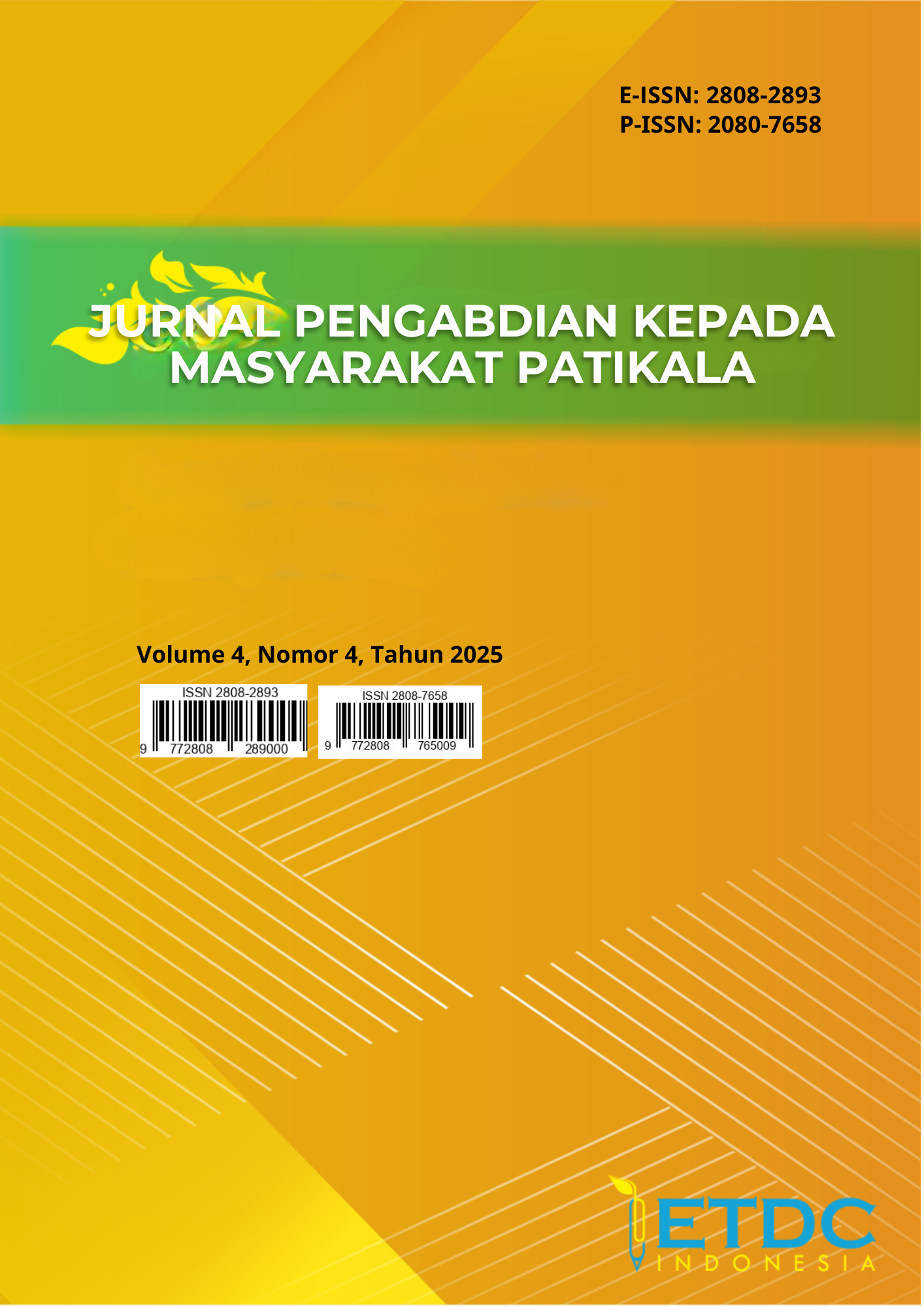TINGKAT ADOPSI PENGGUNAAN PUPUK ORGANIK CAIR URINE KELINCI PADA PETANI PADI DI DUSUN SOROGEDUG KABUPATEN SLEMAN
https://doi.org/10.51574/patikala.v4i4.3435
Keywords:
Innovation adoption, liquid organic fertilizer, rabbit urine, rice farmersAbstract
This community service activity aims to increase the adoption rate of liquid organic fertilizer (POC) made from rabbit urine by rice farmers in Sorogedug Hamlet, Madurejo Village, Prambanan Sub-district, Sleman Regency. Through a quantitative descriptive approach, this activity involved 32 farmer members of the farmer group who were the targets of educational interventions in the form of counseling, training, and field demonstrations. The results of the activity showed that the majority of farmers had reached a high level of awareness and interest in the use of POC, although some were still in the trial stage and had not fully adopted it routinely. Factors such as age, formal education, farming experience, land area, and number of family members contributed to variations in the adoption rate. This activity concluded that to encourage the sustainable use of POC, a farmer group-based approach, facilitation of tools and raw materials, and strengthening of adaptive and participatory technical assistance were needed.
Downloads
References
Boyaci, M. (2022). Factors affecting the adaptation of farmers to innovations according to extension workers: The case of Aegean Region. Ege Üniversitesi Ziraat Fakültesi Dergisi. https://doi.org/10.20289/zfdergi.891627
BPS Kabupaten Sleman. (2024). Sleman Dalam Angka 2023. Badan Pusat Statistik Kabupaten Sleman.
Creswell, J. W., & Poth, C. N. (2018). Qualitative Inquiry and Research Design: Choosing Among Five Approaches (4th ed.). SAGE Publications.
Hendarto, D. R., & Nahor, D. R. V. (2021). Pengaruh metode fermentasi dan penambahan urine kelinci terhadap kualitas pupuk organik cair. Jurnal Teknik Pertanian Lampung, 10(2), 139–146.
Hlatshwayo, P. P. K., & Worth, S. H. (2019). Agricultural extension: Criteria to determine its visibility and accountability in resource-poor communities. South African Journal of Agricultural Extension, 47(2), 1–12. https://doi.org/10.17159/2413-3221/2019/v47n2a499
Mehmood, Y., Barbieri, N., & Bonchi, F. (2016). Modeling adoptions and the stages of the diffusion of innovations. Knowledge and Information Systems, 48(1), 1–27. https://doi.org/10.1007/s10115-015-0889-5
Oduniyi, O. S., Ojo, T. O., & Nyam, Y. S. (2022). Awareness and adoption of sustainable land management practices among smallholder maize farmers in Mpumalanga province of South Africa. African Geographical Review, 41(1), 36–50. https://doi.org/10.1080/19376812.2021.2018661
Rahmatika, W., Soenyoto, E., Andayani, R. D., & Susilo, Y. (2022). Peran pupuk organik cair urin kelinci pada tanaman pakcoy (Brassica rapa L). Buana Sains, 22(3), 59–64.
Rogers, E. M. (2003). Diffusion of Innovations (5th ed.). Free Press.
World Bank. (2023). Agriculture and Food Overview. https://www.worldbank.org/en/topic/agriculture/overview
















